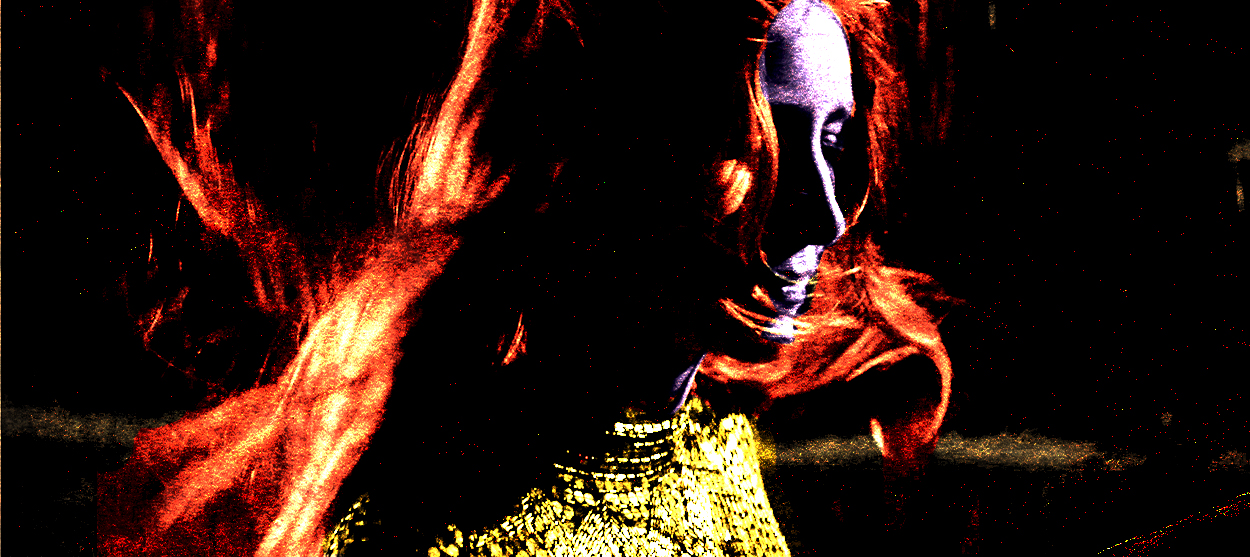Dakota Johnson, queen of sighs
How the actress turned breathing into an art form


The average person takes around 23,000 breaths a day. Unless you're suffering from a cold, most of those are probably silent, part of the soundless succession of respirations that keep us alive. Other breaths, though, do have sound: a bracing inhalation before opening an email, a huff dealing with an unhelpful customer service agent, a tense exhale in anticipation of walking out into the cold. These audible breaths are among the subtlest forms of expression, not as manifest as pulling a face or as demanding as speech, but just as revealing.
And no one understands their art quite like the actress Dakota Johnson.
Actors typically tend to fall in one of two categories — those who act most distinctly with their voices and those who act with their expressions and bodies. Morgan Freeman and Christopher Walken both have vocal presentations that get them typecast into corresponding roles, while Nicholas Cage conveys character through posture and Tom Hanks through facial expressions. It is much harder to identify someone who walks the line between both these realms, relying on the faculty of audible breath for communicating everything from anger to pleasure to amusement. While Johnson's breathing is best displayed in Luca Guadagnino's remake of Suspiria, out Friday, it has been the bread and butter of her career for years.
The Week
Escape your echo chamber. Get the facts behind the news, plus analysis from multiple perspectives.

Sign up for The Week's Free Newsletters
From our morning news briefing to a weekly Good News Newsletter, get the best of The Week delivered directly to your inbox.
From our morning news briefing to a weekly Good News Newsletter, get the best of The Week delivered directly to your inbox.
The Social Network, in 2010, marked Johnson's first adult role, as Stanford student Amelia Ritter. Despite the small part, Johnson memorably banters with Sean Parker (Justin Timberlake) after a drunken night out, irked that he might not remember her name. The role is typical of how Johnson would subsequently be typecast — as a somewhat naïve young woman ("you're Sean Parker?") who is 50 percent undressed in her scenes. More notably, though, her Social Network role features the debut of her "amused huff," a kind of audible eye roll when Parker tells her, "I'm a hard worker" (at the two-minute mark in the clip below):

Her exhale serves as a transition in their conversation — an improvision that isn't marked in the script — a sort of comma between their joking and her congenial offer of juice or breakfast. Without having actually said anything, she's given Sean Parker an audible touché.
Johnson's breath acting would take on an even more central role in the Fifty Shades of Grey series. As the ingenue Anastasia Steele discovering the world of sadomasochism with Christian Grey (Jamie Dornan), Johnson's breathing is used to signal her character steadying herself, her lust, and, of course, her pleasure. It is the scenes of tension, though, where Johnson's breathing is the most communicative, indicating the nerves behind her performative confidence (a steadying breath) or the desire driving her negotiations with Christian (a shaky inhalation). One of the best moments is when she leaves Grey's office for the first time, gasping for air, a sort of physical manifestation of the romantic ideal of someone stealing one's breath away. Amusingly, it is the breathing during Johnson's sex scenes that feels the least innovative, serving mostly as a reminder that Anastasia is a consenting participant who is enjoying the coupling.
Breathing as a form of seduction also exists in A Bigger Splash, another film where Johnson is an object of desire, although this time she is in more control. She is also more in control as an actress, with her breathing subtler than Anastasia Steele's nearly Victorian pantings. Retrieving coins from a pool during one scene, she surfaces for air with a spent and suggestive gasp, turning even the necessary recovery of breath into a flirtation. In another, she offers a cigarette after an audible inhale, with her rush of breath signifying intimacy — the implication of bodies being close enough to catch each other's softest sounds.
A free daily email with the biggest news stories of the day – and the best features from TheWeek.com
But if there is one masterclass in the subtle communicative power of breath, it is, fittingly, the 2018 remake of Suspiria — the title means "sighs." Playing a young dance student, Susie Bannion, it sometimes seems as if Johnson has more breathing cues than she even has lines. Her early scenes are played out-of-breath, with a girlish excitement. Later, the sound of her breathing becomes necessary for conveying exertion, the physical toll that dance takes and the power it requires. That breathing plays a dual role, though, with Johnson's breath amplified in the editing process, intentionally elevating respiration to a medium "like poems, like prayers, like spells," as the movie says. She gasps, as if punched, as she swings an arm violently across her body; she huffs in an aggressive inhale as she brings her head up.
As the movie progresses, Johnson's breathing becomes more and more integral a soundtrack. We can hear her breathing when she collects herself, as well as her private exhales, as if she had been holding her breath. We hear her release a sigh when her long Amish hair is cut off. Although she speaks infrequently, and voices her thoughts even more rarely, the audience keeps pace with her fear, her exhalation, and her weariness by the measure of her breaths.
Breathing is a function of homeostasis, something essential to our existence but something that we almost never think about. It's also a window into our internal life; while our sighs, gasps, and exhales might be mostly unconscious, they're as important to revealing our thoughts and feelings to the people around us as our actual words.
By acting with her breath, Dakota Johnson doesn't just fill a role. She embodies her characters, turning even their most basic life-giving act into a tool of her illusion.
Jeva Lange was the executive editor at TheWeek.com. She formerly served as The Week's deputy editor and culture critic. She is also a contributor to Screen Slate, and her writing has appeared in The New York Daily News, The Awl, Vice, and Gothamist, among other publications. Jeva lives in New York City. Follow her on Twitter.
-
 US citizens are carrying passports amid ICE fears
US citizens are carrying passports amid ICE fearsThe Explainer ‘You do what you have to do to avoid problems,’ one person told The Guardian
-
 All roads to Ukraine-Russia peace run through Donetsk
All roads to Ukraine-Russia peace run through DonetskIN THE SPOTLIGHT Volodymyr Zelenskyy is floating a major concession on one of the thorniest issues in the complex negotiations between Ukraine and Russia
-
 Why is Trump killing off clean energy?
Why is Trump killing off clean energy?Today's Big Question The president halts offshore wind farm construction
-
 Walter Isaacson's 'Elon Musk' can 'scarcely contain its subject'
Walter Isaacson's 'Elon Musk' can 'scarcely contain its subject'The latest biography on the elusive tech mogul is causing a stir among critics
-
 Welcome to the new TheWeek.com!
Welcome to the new TheWeek.com!The Explainer Please allow us to reintroduce ourselves
-
 The Oscars finale was a heartless disaster
The Oscars finale was a heartless disasterThe Explainer A calculated attempt at emotional manipulation goes very wrong
-
 Most awkward awards show ever?
Most awkward awards show ever?The Explainer The best, worst, and most shocking moments from a chaotic Golden Globes
-
 The possible silver lining to the Warner Bros. deal
The possible silver lining to the Warner Bros. dealThe Explainer Could what's terrible for theaters be good for creators?
-
 Jeffrey Wright is the new 'narrator voice'
Jeffrey Wright is the new 'narrator voice'The Explainer Move over, Sam Elliott and Morgan Freeman
-
 This week's literary events are the biggest award shows of 2020
This week's literary events are the biggest award shows of 2020feature So long, Oscar. Hello, Booker.
-
 What She Dies Tomorrow can teach us about our unshakable obsession with mortality
What She Dies Tomorrow can teach us about our unshakable obsession with mortalityThe Explainer This film isn't about the pandemic. But it can help viewers confront their fears about death.
